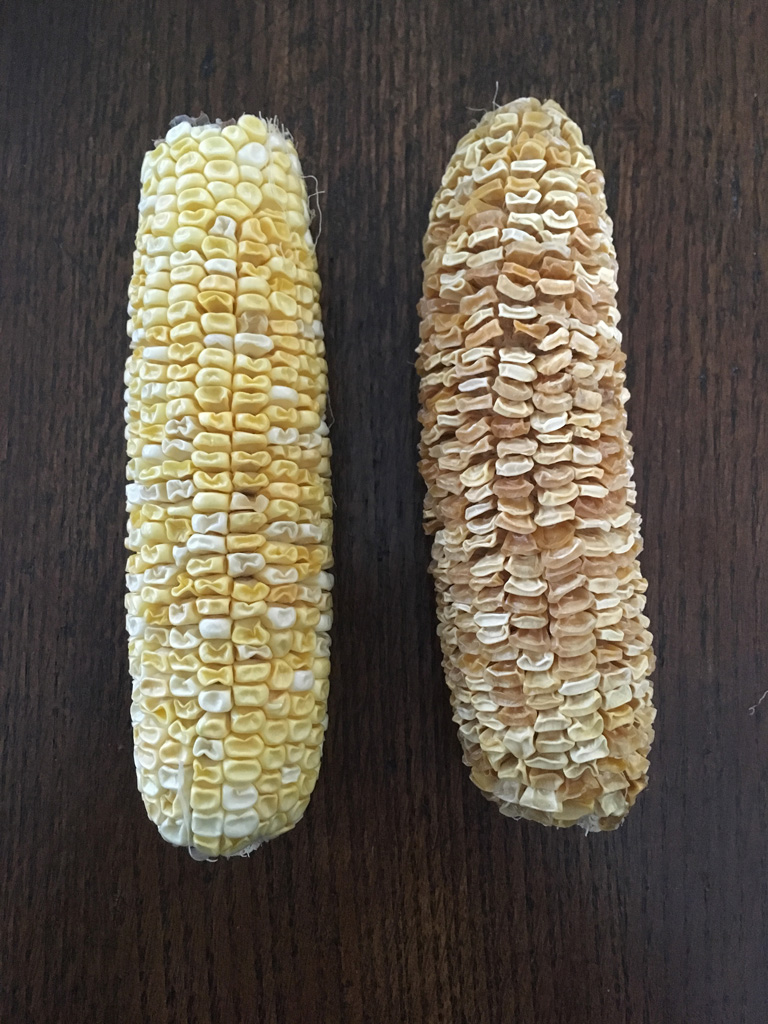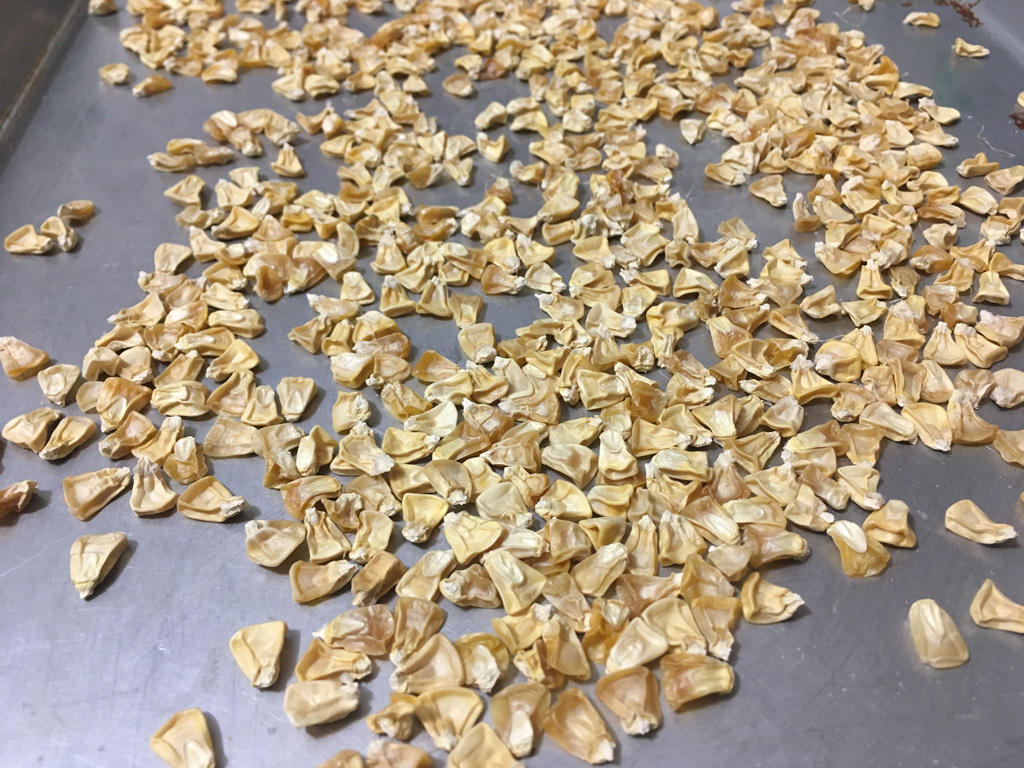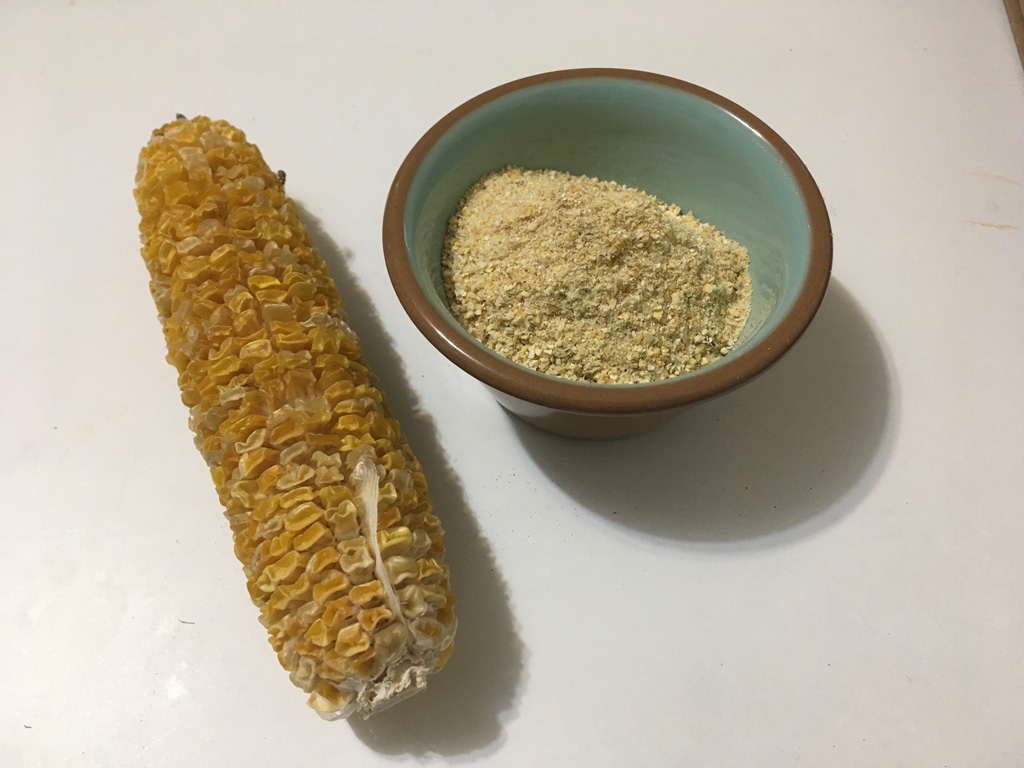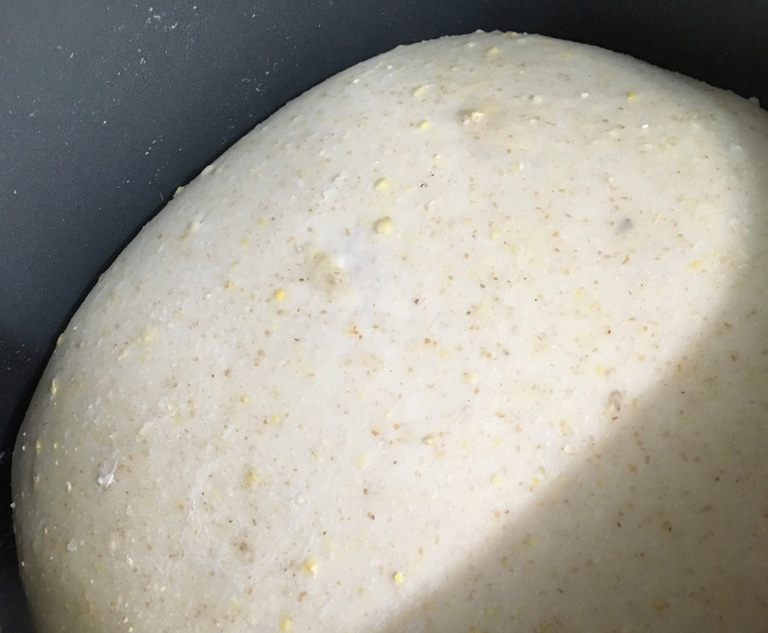If you wish to live life deliberately, I recommend a program of avoiding simple conveniences, in favor of difficult but more deeply satisfying alternatives.
One example of this that many of us can relate to is the simple act of making your own bread. While it is also possible to go a step further and also eliminate the yeast and sugar, for many this is a bridge too far, because it means we must wait more than a day for a proper rise (if it happens at all), and we would like our bread today, at least. Without the magical combination of yeast and a bit of sugar, breadmaking would be a strange and obscure practice to the vast majority of household cooks (almost as if it were the 1970s again).
But you can still meet your Thoreauvian side halfway, by eliminating the refined sugar without sacrificing a good rise — by means of a laborious but quite fascinating alternative. For inconvenience, this one pulls out all the stops: it takes weeks of patient waiting, it depends on a seasonal ingredient that is not available for most of the year, and you have to clean a blender when you’re done. I don’t know about you, but I’m certainly intrigued. So let’s get started!
When making a rustic bread, or even an ordinary pizza crust, corn meal is a popular addition (in Thoreau’s day, it was known as “Indian meal”, and it was a major ingredient in his daily hearth-fired breads in the two years he spent at Walden). I regularly use a couple of tablespoons of coarse corn meal in my homemade breads and pizza crusts, to lend a pleasing texture to the crust as well as the crumb.
But not many people know that sweet corn from your supermarket produce section can be dried and made into a very sweet version of corn meal, using an ordinary blender — bringing both texture and yeast-rising sugars to your bread, by way of a single ingredient. Sweet-corn meal can also be used anywhere you would use regular cornmeal, including for corn muffins or corn bread (at up to a 50/50 ratio), to which it lends a delicious flavor and sweetness.
Convenience is overrated
You won’t find sweet-corn meal in your grocery store. As far as I can tell, it isn’t available commercially at all. I first learned about it several years ago in the labyrinthine seed catalog of Sand Hill Preservation Center, where it was mentioned that Rainbow Inca sweet corn can be dried and made into corn meal, just like regular field corn. I bought a packet of “Buhl” sweet corn seeds instead, and when they grew to maturity, enjoyed their golden ears fresh, in the traditional way. But the idea of sweet-corn-meal stuck with me afterward. At the end of summer, I dried a few leftover ears of Buhl to save for the next year’s seed, and in mid winter, noticed that it had dried into shriveled, wrinkled kernels that were hard enough to grind into meal. Later, I dried some leftover ears of commercial sweet corn from the grocery store — and it dried in exactly the same way. Grinding it made a noticeably sweet and delicious cornmeal.
You can find fresh sweet corn, when in season, at any supermarket. But you will have to dry it yourself. A dehydrator or oven will work, but I have typically just removed the husks and silk from the the ears and placed them on a metal grille or screen in a warm place during the summer, where I expected temperatures to be well over 80 F for much of the day. I then left them there for about two to three weeks. After all, this is similar to how corn dries naturally, when left on the stalk in the field. If kept from curious pets and opportunistic insects, the kernels should slowly shrink and shrivel, until they harden. But if you have any doubts that the room is warm enough, do use a warm oven (no more than 170 F) or a dehydrator — or sun dry them, if the weather is sunny enough. If the room is not warm enough, they may mold instead of becoming dried, and you will have to start over.

Below, the corn on the left has dried in the warm room for a week. The cob on the right has been stored in a dry place for nine months. But it only took about two to three weeks in the warm room to reach this state, and at that point was ready to shell. Once thoroughly dried, sweet corn has a very long shelf life. It will look the same after another year.

Twist and Grind
Once dried, simply remove the kernels (called “shelling” the corn) by twisting the dried ear in your hands. The dried kernels should pop off easily. If the cob is also dry, and the kernels are hard, they are likely ready to grind. But if it’s been less than several months, I strongly recommend a forced dry in a warm oven, first. Place the kernels on a shallow tray and place it in a 150-170 F oven, with the door partially open, for about 30-45 minutes. It is important that the kernels not cook or toast, but only become dry enough to grind.

Once cool, place them, about a cup at a time, into a blender, and blend for about a minute, until there is a good deal of corn meal flying around (don’t try this with regular corn — it’s much too hard, but sweet corn is more manageable). Not all of the kernels will turn into corn meal immediately — periodically, pour the contents of the blender into a wire mesh sieve, and allow the finer particles to fall through into a bowl. This is your sweet-corn meal.
The product smells amazing — somewhere between fresh sweet corn, and roasted corn. The scent alone is worth the time it takes to get to this step.
Return the contents of the sieve to the blender, and repeat the process until all of the kernels have been pulverized into meal.

One ear of sweet corn, about 250 g when fresh, weighed about 75 g when air dried. The kernels alone (minus the cob) weighed about 50 g after the oven-drying step. This yielded 45 g of sweet-corn meal, or somewhere between 1/3 cup and 1/2 cup. About 5 g, consisting of the last few hulls that would neither grind nor pass the sieve, was discarded.

Rise
To make bread, I have found that two tablespoons of this meal is enough to raise a one-pound loaf of bread in a bread maker, based on a recipe that uses 270 grams of flour (20% whole wheat) and one teaspoon of dry yeast. Below we see the result after two hours of rise time — more time than was really necessary.

This was a simple pizza dough, and it resulted in a fine pizza. The rise and the feel of the dough was indistinguishable from having used refined sugar. I would have used the same amount of corn meal in any case, but using sweet-corn meal meant I could eliminate the sugar.
Why bother with all this effort, to save a teaspoon of sugar? Well, if you have to ask, then you will be much happier using a teaspoon of sugar or honey instead — and there’s nothing wrong with that.
It’s not about saving sugar — it’s about showing that you can get by without sugar, with a little patience and effort. For some of us — especially after a pandemic year when bread yeast and many other commodities were scarce, but patience more abundant than ever — this subversive little trick needs no explanation at all.


